Your shoulders do a lot more than you realize—lifting, pullifng, and stabilizing every upper-body movement. But if your teres major muscle is weak, those movements can feel stiff or even painful.
That’s why strengthening it matters. Using dumbbells, you can target this small but mighty muscle to improve shoulder stability, strength, and mobility—all while reducing injury risk.
Here are effective teres major dumbbell exercises to help you move better [1] and feel stronger!
Warm-Ups
1. Shoulder Rolls
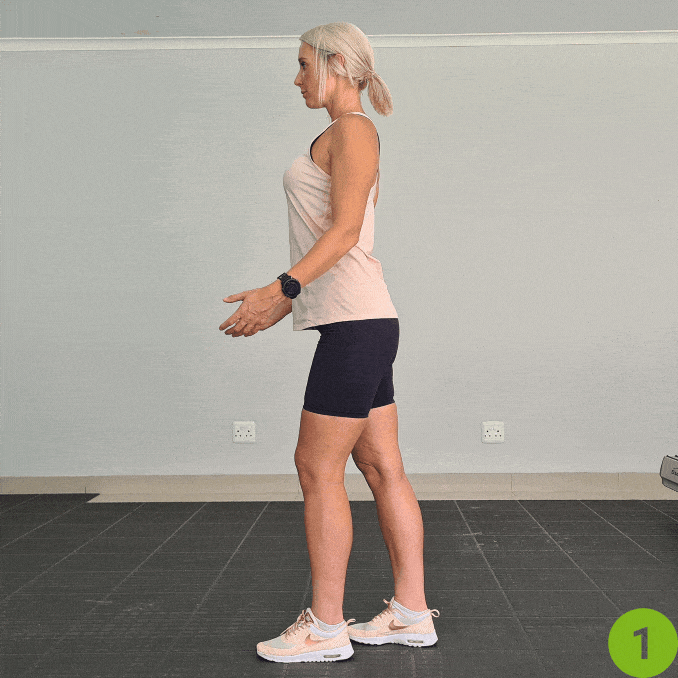
- Begin in an upright standing position with your feet hip-width apart, maintaining good alignment with your head, shoulders, hips, and legs.
- Step one foot forward and place your hands at your side.
- Engage your core.
- Lift your shoulders, then roll them down and back until you feel resistance in your shoulder blades.
- After several movements, lower your shoulders to the starting position and repeat the movement in the opposite direction.
2. Arm Circles
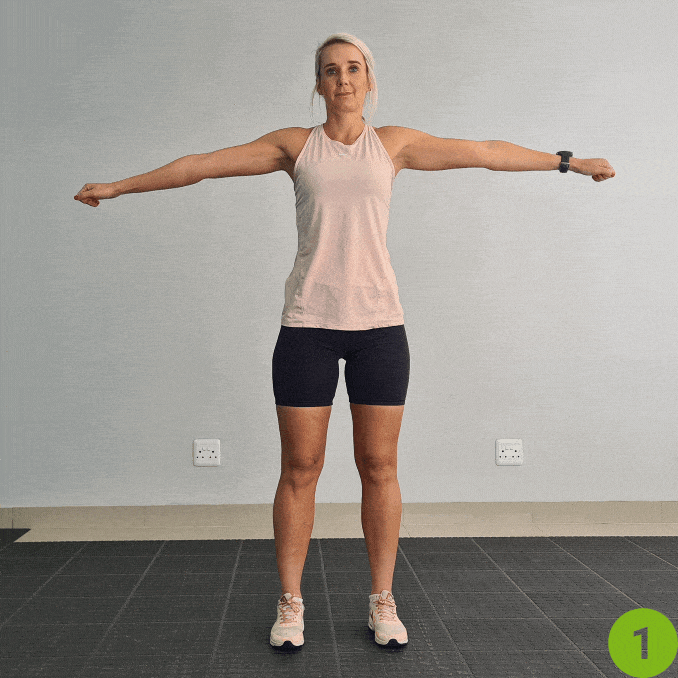
- Begin in an upright standing position with your feet shoulder-width apart, maintaining good alignment with your head, shoulders, hips, and legs.
- Extend both arms straight out to the sides, parallel to the ground, with your palms facing down.
- Engage your core and begin making small circles with your arms in a forward direction.
- Gradually increase the size of the circles as you continue.
- After performing for 20-30 seconds, reverse the direction of the circles and continue for another 20-30 seconds.
- Complete 1 set of 1 minute of arm circles, alternating directions.
3. Overhead Reach
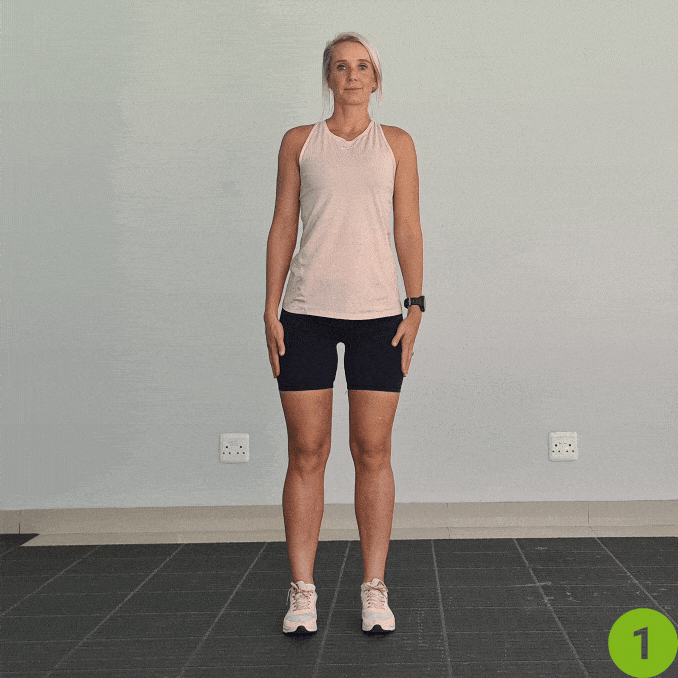
- Begin in an upright standing position with your feet shoulder-width apart, maintaining good alignment with your head, shoulders, hips, and legs.
- Place your hands at your sides.
- Engage your core and bend your upper body to the side, reaching over your head with your left arm.
- Do not over-extend bending to prevent injury.
- Return to the starting position and repeat the movement on the opposite side.
- Start with 10 repetitions on each side.
Routines
Now, here are some exercises you can do at home that specifically engage the teres major:
4. Dumbbell Pullover
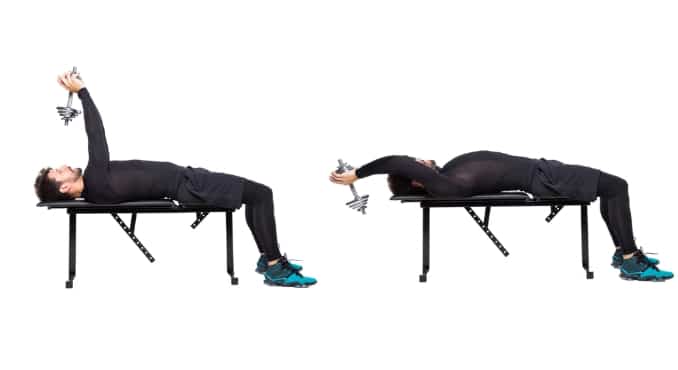
Use a dumbbell and flat bench for support for this exercise.
- The dumbbell pullover primarily engages the latissimus dorsi, with assistance from the teres major.
- Begin by positioning yourself on a flat bench and leaning to the rear with your feet slightly wider than shoulder-width apart and flat on the floor, maintaining good alignment with your head, shoulders, and hips.
- Hold a dumbbell with both hands; place the dumbbell straight over your face.
- Engage your core and slowly lower the dumbbell backward over your head in a controlled arc motion, keeping your elbows slightly bent.
- Complete this movement for 8 to 12 repetitions.
5. Dumbbell Shoulder Shrug
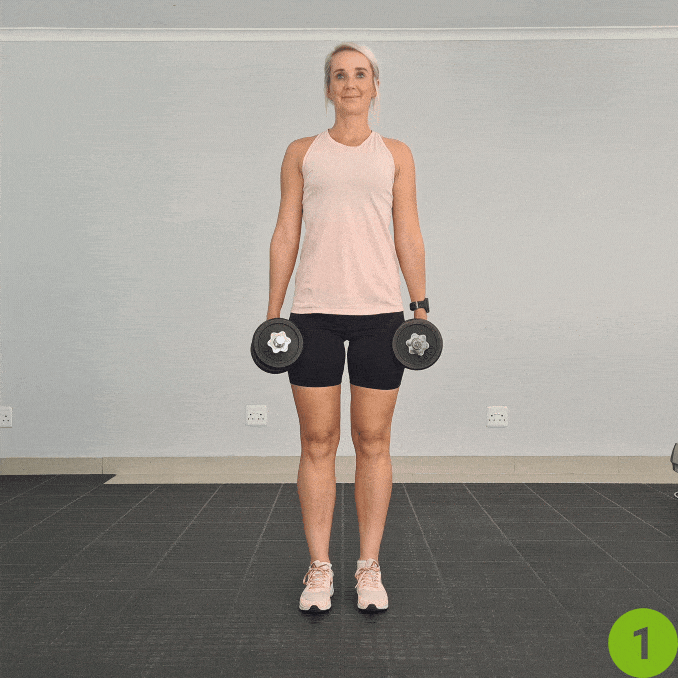
- For this teres major dumbbell exercises, begin in an upright standing position with your feet closed together, maintaining good alignment with your head, shoulders, hips, and legs.
- Hold a dumbbell in each hand with your arms at your sides, palms facing your body.
- Raise your shoulders towards your ears smoothly and slowly, going as high as you can without bending your elbows.
- Squeeze your shoulder muscles hard at the top.
- Hold that squeeze for a short time, then gently lower your shoulders back down to the starting position.
- Complete this movement for 10 to 15 repetitions.
- Consider replacing this with an exercise like prone Y raises or reverse flies, which engage the teres major more directly.
6. Single Arm Dumbbell Press
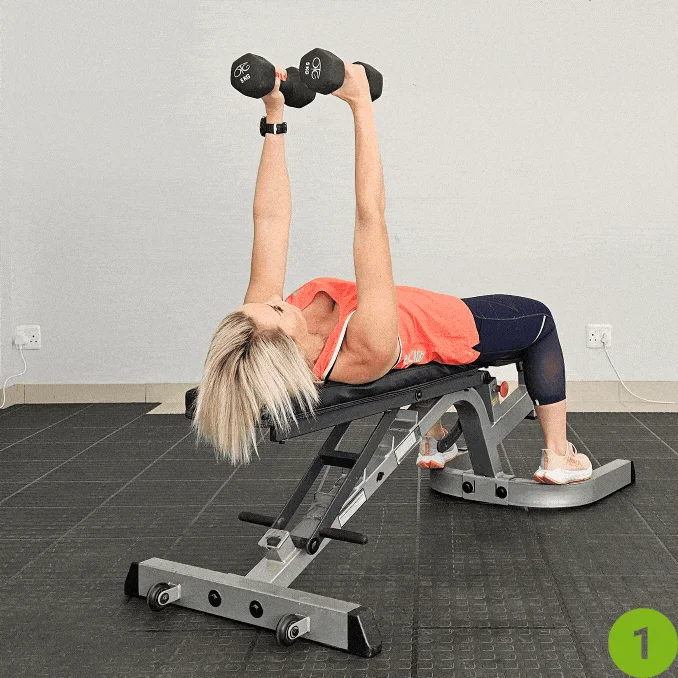
- Begin by positioning yourself on a flat bench, leaning to the rear with your feet slightly wider than shoulder-width apart and flat on the floor.
- Maintain good alignment with your head, shoulders, and hips.
- Hold a dumbbell in one hand and extend that arm upward over your chest.
- Engage your core and slowly lower the dumbbell in a controlled motion until your elbow is at a 90-degree angle.
- Push the dumbbell back up to the starting position.
- Complete 8 to 12 repetitions on one side before switching to the other arm.
7. Lateral Raises
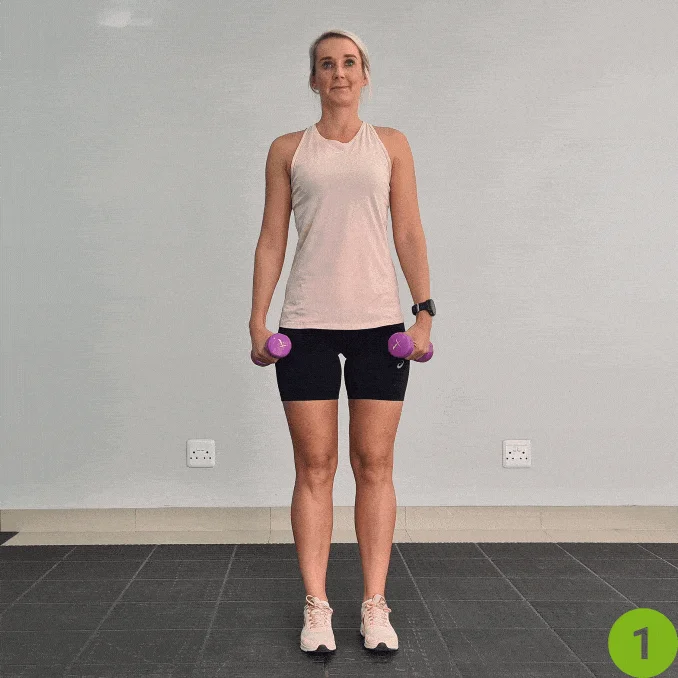
- For this teres major dumbbell exercises, begin in an upright standing position with your feet hip-width apart, maintaining good alignment with your head, shoulders, hips, and legs.
- Hold dumbbells at your sides with your arms fully extended.
- Tighten your stomach muscles and slowly lift your arms from your sides up to just below shoulder height, making sure they don’t go above 85 degrees.
- Keep this movement steady and controlled, and pull your shoulder blades a little bit back.
- Hold briefly at the top of the movement before slowly lowering your arms back to the starting position.
- Complete this movement for 8 to 12 repetitions.
8. Bent Over Rows
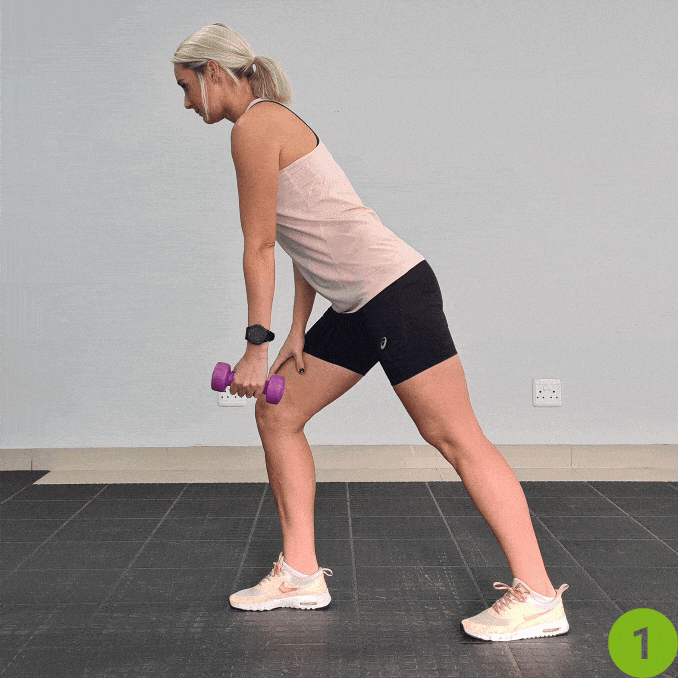
For this teres major exercises, use a dumbbell, kettlebell, a can of soup, or anything that weights added resistance.
- Begin in an upright standing position with your feet hip-width apart, maintaining good alignment with your head, shoulders, hips, and legs.
- Hold a dumbbell in one hand and step back with one foot.
- Bend your front and place your opposite hand on your bent knee.
- Engage your core and pull your weighted arm back in a rowing motion, keeping your elbow at a 30- to 45-degree angle.
- Return to the starting position and repeat the movement on the opposite side.
Start with 1 set of 10 repetitions on each side.
9. Dumbbell Bend Over Fly
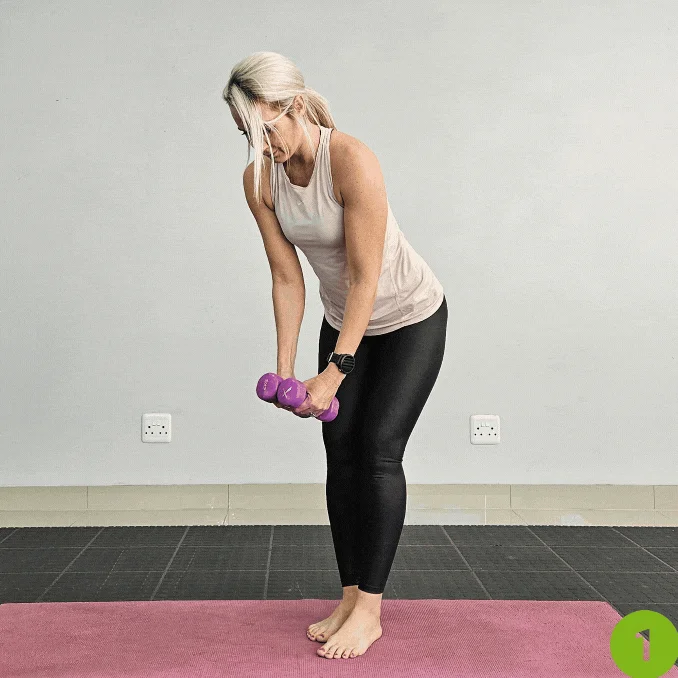
For this teres major exercises, use a dumbbell, kettlebell, a can of soup, or anything that has weight for added resistance.
- Begin in an upright standing position with your feet hip width apart, maintaining good alignment with your head, shoulders, hips and legs.
- Step one foot forward and hold a dumbbell in each hand with a neutral grip.
- Slightly bend one knee forward and hinge through your hips, bringing your arms perpendicular to the floor.
- Engage your core and slowly lift the dumbbells out to the sides at chest height, squeezing your shoulder blades together.
- Hold this position for a few seconds, and slowly return to the starting position.
- Repeat the movement for 10 to 15 repetitions.
What is Teres Major Muscle
“The teres major contributes to the overall mobility and strength of the shoulder, especially during activities that involve lifting, pulling, or rotating the arm. Its proper function is important for maintaining shoulder stability and preventing injury.” – Mantun Jhan, MBBS
In sports like baseball and cricket, it aids in throwing motions, generating power and control. Rowing exercises engage the teres major through pulling movements, while lifting relies on it for arm stability.
In yoga, poses like Chaturanga require teres major muscle activation for balance and support. Strengthening this muscle improves shoulder mobility, posture, and injury prevention, making it essential for upper-body strength and function.
Benefits of Strengthening the Teres Major
Strengthening the teres major muscle is crucial for maintaining shoulder health and preventing related injuries. Here are some key benefits:
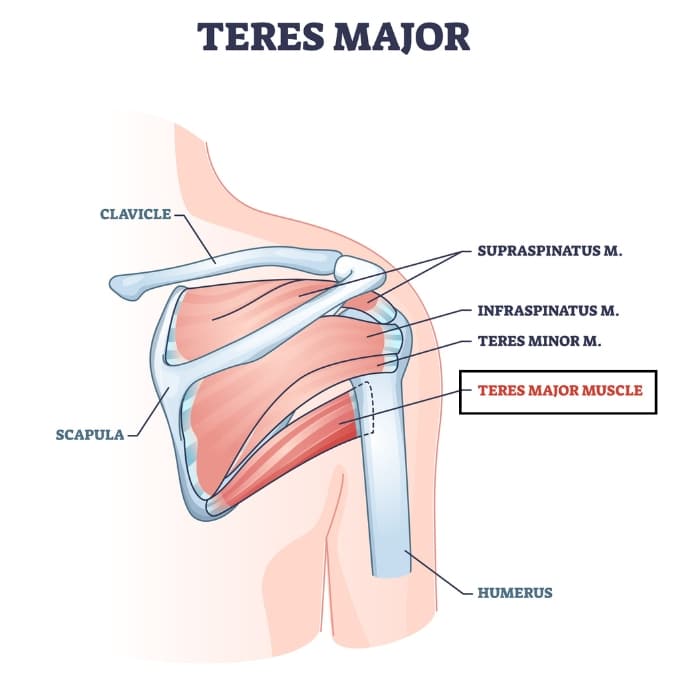
- Injury Prevention: Building strength in the teres major can help ward off conditions such as shoulder impingement syndrome or bursitis. This muscle works closely with the rotator cuff muscles to maintain proper shoulder mechanics, reducing the risk of injury.
- Enhanced Range of Motion: Strong teres major muscles enhance the range of motion in the shoulder joint, which is vital for performing daily activities and excelling in sports.
- Posture and Neck Pain: Regularly exercising the teres major, along with the teres minor muscles, helps improve shoulder alignment, which in turn mitigates neck pain and corrects poor posture.
- Overall Strength: A robust teres major contributes to the overall and stability of the shoulder an back muscles, providing better support and power for a wide range of movements.
Risks of Neglecting the Teres Majors
Ignoring the teres major can lead to several problems, including:
- Shoulder Instability: Weakness in the teres major can cause difficulty in stabilizing the shoulder, leading to improper movement patterns and increased injury risk.
- Decreased range of motion: A weak teres major limits arm mobility, making overhead and pulling movements more difficult.
- Higher risk of shoulder injuries: Insufficient strength in this muscle can contribute to rotator cuff injuries [2], impingement, and muscle strains.
“Isolated tears of the teres major are rare, but the people most likely to get them are overhead athletes such as pitchers, baseball players, and volleyball players.”– Nick Gallo, Doctor of Physical Therapy
- Poor posture and chronic pain: Weakness in the teres major can lead to shoulder rounding, poor posture, and discomfort in the upper back and neck.
- Reduced athletic performance: Sports and activities that require throwing, pulling, or lifting may be compromised due to weak shoulder support.
Teres Major Dumbbell Exercises Tips
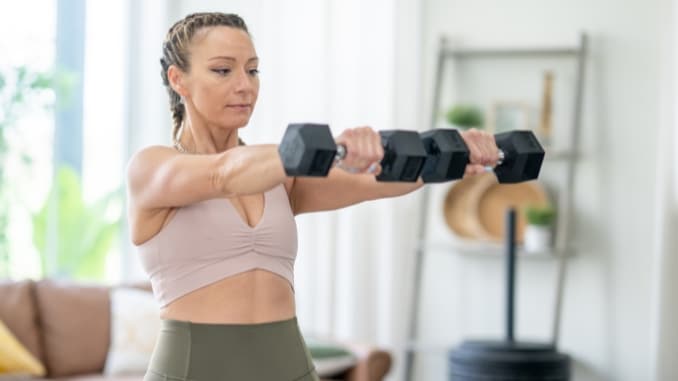
- Mix in exercises that focus on both the teres major and the surrounding shoulder muscles.
- Start with lighter weights and gradually increase to heavier ones as you gain strength.
- Emphasize correct form and technique to avoid injuries.
- Include exercises that target additional muscle groups, such as the latissimus dorsi and trapezius, for balanced strength development.
Conclusion
In conclusion, focusing on your teres major [3] muscle through a well-rounded workout plan can significantly enhance your shoulder strength and overall upper-body fitness.
By starting with manageable weights, prioritizing proper form, and gradually increasing the intensity, you can build strength safely and effectively.
Remember to incorporate a variety of exercises that target both the teres major and other key muscle groups to ensure a balanced and comprehensive approach to your fitness routine.
With consistent practice and patience, you can build strong and healthy teres major muscles.
Save yourself money and frustration – get The Frozen Shoulder Recovery Program and restore pain-free movement! Check out now!
Frequently Asked Questions
How to Train the Teres Major with Dumbbells?
You can train the teres major with dumbbells by performing exercises that involve shoulder adduction, extension, and internal rotation. Effective exercises include dumbbell pullovers, bent-over rows, and lateral raises.
What Exercise Works the Teres Major?
- The teres major is activated in exercises like:
- Dumbbell Pullover (shoulder extension)
- Bent-Over Rows (pulling motion)
- Lat Pulldowns (pulling and shoulder adduction)
- Dumbbell Reverse Flys (scapular retraction and stability)
How Do You Isolate the Teres Major?
- To isolate the teres major, focus on single-joint movements like:
- Dumbbell Pullover (lying on a bench, keeping elbows slightly bent)
- Cable Straight-Arm Pulldown (standing, pulling the cable down in an arc)
- Single-Arm Dumbbell Row (emphasizing a controlled, full range of motion)
What is Teres Major Syndrome?
Teres Major Syndrome is a rare condition involving pain, tightness, and dysfunction in the teres major muscle, often caused by overuse, repetitive overhead movements, or muscle imbalances.
Symptoms include: Pain in the posterior shoulder and upper arm, weakness in shoulder extension and adduction, and reduced mobility or tightness. Treatment typically includes stretching, strengthening, and manual therapy to relieve muscle tightness and improve function.


